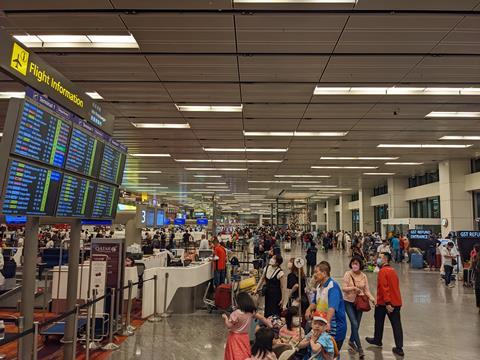Lessor Avolon is upbeat about the aviation sector’s prospects in 2023 but highlights some key challenges facing the sector.
In its 2023 outlook, the lessor contends that the aircraft leasing sector drove world fleet growth over the last three years, and now manages 53% by value. And where 2022 demonstrated airline resilience, 2023 will see them “enroute to profitability and growth again.”

“For every two seats of airline capacity added in the world today, one is in Asia,” says Avolon. “China’s reopening will unlock significant demand, driving rapid recovery in the region.”
On the year ahead, Avolon forecasts that China’s opening will help push global passenger traffic to 2019 levels by June.
“Asia-Pacific was rapidly recovering before China’s removal of quarantine restrictions,” says Avolon. “Despite the implementation of testing requirements, reopening of the world’s second largest aviation market will drive a rapid uptick in air travel. The expected mild recession in the West should not impede the positive outlook for air travel, driving a return to operating profits for the airline sector in all regions.”
Still, it notes plenty of challenges, both near and long term. Economies and supply chains are suffering “whiplash” as activity rebounds following the pandemic years.
It forecasts that airframers will continue struggling to meet production targets, and that airline consolidation will accelerate as the rate of new start-ups entering the market slows. It observes that over 100 new carriers were started over the last three years to take advantage of available aircraft and crews.
Avolon also observes that there are 1,200 more stored aircraft now than in 2019 owing to “artificially low retirements,” and that a retirement wave is to be expected.
“Uncertainty in future fleet requirements, an increase in freighter demand, a depressed used serviceable materials market, and limited labour availability have all contributed to a lack of fleet exits,” it says. “This trend will reverse in the coming year as personnel reactivating aircraft today are redeployed to restock parts inventories tomorrow.”
Avolon also dedicates an entire section to the airline’s greatest long-term challenge: sustainability and the achievement of net-zero emissions by 2050.
While “disruptive” technologies are essential to achieving this goal, it feels that they are unlikely to have a major impact over the next twenty years. Moreover, the challenges involved in replacing 34,000 aircraft means that new sustainability technologies must be available on a drop-in basis.
“The manufacturers who design and produce the vast majority of the world’s fleet are best positioned to lead aviation’s technology transition,” says Avolon.
“However, the business case for an all-new, clean-sheet design is tenuous. Today’s aircraft and engines are highly efficient and challenging to produce in scale. Locking-in one design pathway now risks pre-empting tomorrow’s winning technology in an industry requiring billions to enter and decades to optimise.”


























